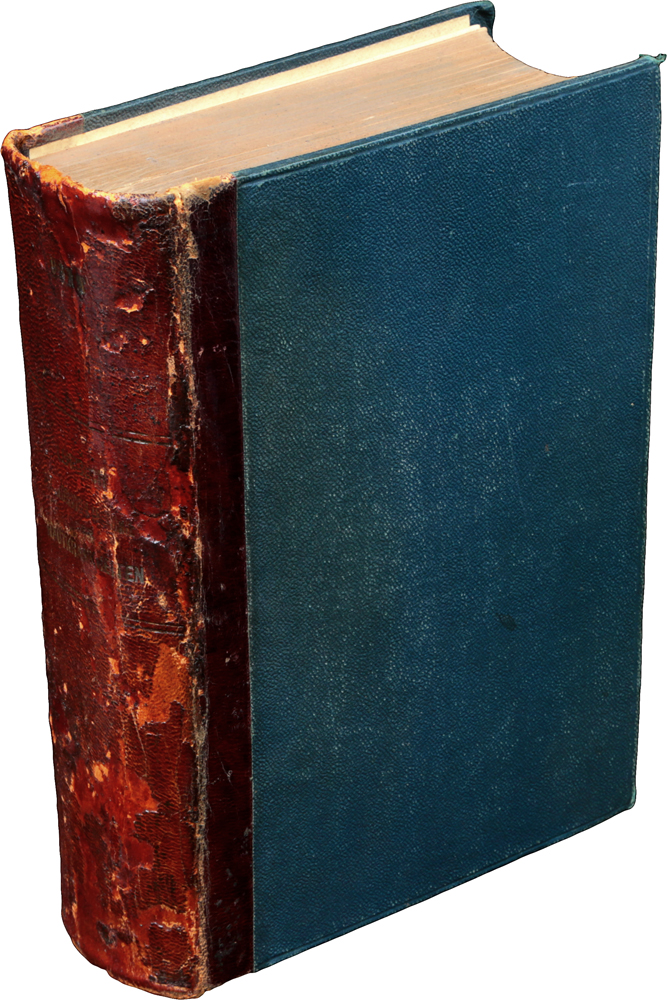Книга: Johannes Orth «Lehrbuch der speciellen Pathologischen Anatomie»

|
Прижизненное издание. Берлин, 1894 год. Издательство "Verlag von August Hirschwald" . Издание с 1 цветной таблицей. Владельческий переплет. Сохранность хорошая. Вниманию читателей предлагается учебник специальной (частной) патологической анатомии немецкого врача, анатома и патолога Иоганна Орта. Орт написал целый ряд учебников, имел репутацию хорошего педагога. Главные его работы - "Compendium der pathologisch-anatom. Diagnostik", "Cursus der normalen Histologie" и настоящее издание - "Lehrbuch der speciellen patholog. Anatomie" . Частная патологическая анатомия изучает материальный субстрат болезни, ее этиологию, патогенез, проявления (клинические и морфологические) и исход болезни. В книге выделено несколько крупных разделов, посвященных болезням сердечно-сосудистой системы и кроветворных органов, нарушения циркуляции крови, воспалениям, болезням органов пищеварения и расстройствам питания, порокам развития и др. Не подлежит вывозу за пределы... Издательство: "Verlag von August Hirschwald" (1894) Формат: 160x235, 1226 стр.
Купить за 8000 руб на Озоне |
Johannes Orth
Johannes Orth (
Orth specialized in the pathological study of infectious diseases, particularly
References
* "This article is based on a translation of an article from the German Wikipedia".
* [http://pediatrics.aappublications.org/cgi/content/full/106/2/e15 Pioneers in the Scientific Study of Neonatal Jaundice and Kernicterus]
Источник: Johannes Orth
Другие книги схожей тематики:
| Автор | Книга | Описание | Год | Цена | Тип книги |
|---|---|---|---|---|---|
| Johannes Orth | Lehrbuch der speciellen Pathologischen Anatomie | Прижизненное издание. Берлин, 1894 год. Издательство "Verlag von August Hirschwald" . Издание с 1 цветной таблицей… — Verlag von August Hirschwald, (формат: 160x235, 1226 стр.) Подробнее... | 1894 | 8000 | бумажная книга |
См. также в других словарях:
Hugo Ribbert — Moritz Wilhelm Hugo Ribbert (* 1. März 1855 in Elsey, heute Hagen Hohenlimburg; † 6. November 1920 in Bonn) war ein deutscher Pathologe, Hochschullehrer und Lehrbuchautor. Ribbert gilt als Erstbeschreiber der Zytomegalie. Sein 1901 begründetes… … Deutsch Wikipedia
Hugo Ribbert — (Moritz Wilhelm) Hugo Ribbert (1855, Hohenlimburg 1920, Bonn) was a German professor of pathology. Ribbert studied at Bonn, Berlin and Strassburg. In 1883 he was appointed Professor extraordinarius at Bonn. In 1892 he became Professor at Zurich.… … Wikipedia
Felix Victor Birch-Hirschfeld — Dr. Birch Hirschfeld Grabstätte Felix … Deutsch Wikipedia
Edward Flatau — im Kreise seiner Kollegen in Berlin 1901 (von links nach rech … Deutsch Wikipedia
Felix Victor Birch-Hirschfeld — (May 2, 1842 November 19, 1899) was a German pathologist who was a native of Kluvensieck bei Rendsburg. In 1867 he received his medical doctorate from the University of Leipzig, where he studied under Carl Reinhold August Wunderlich (1815 1877)… … Wikipedia
